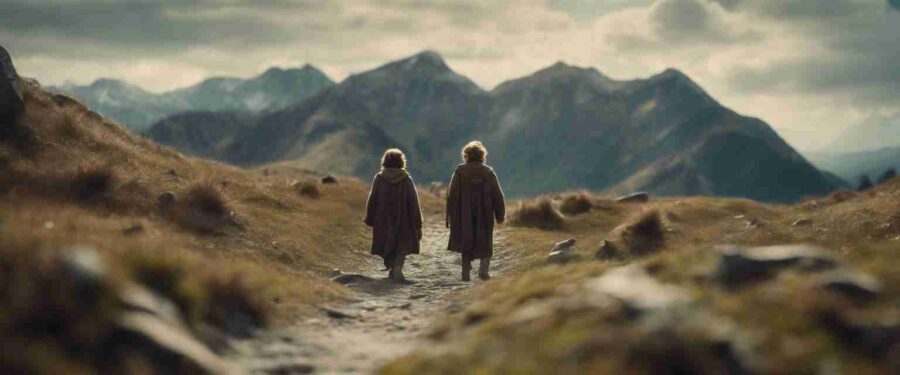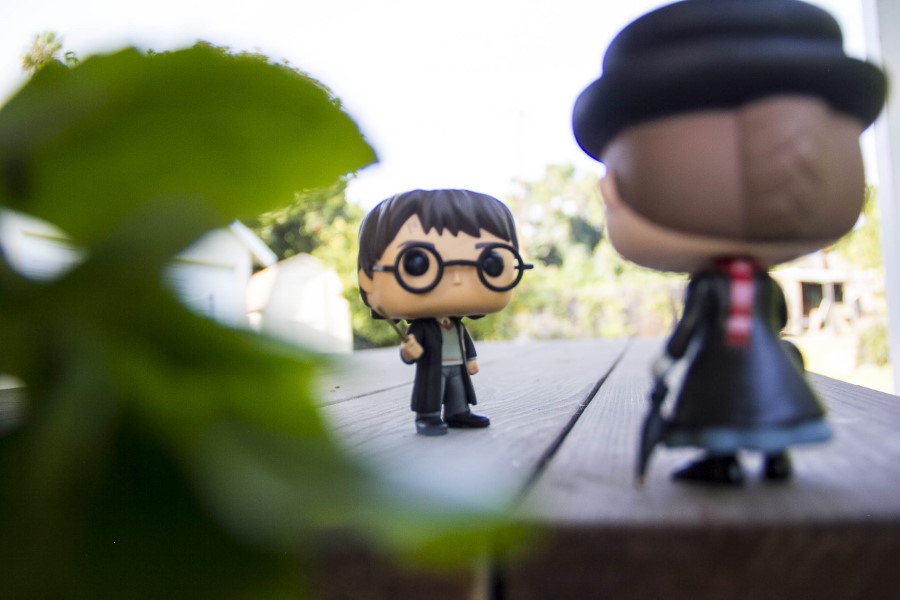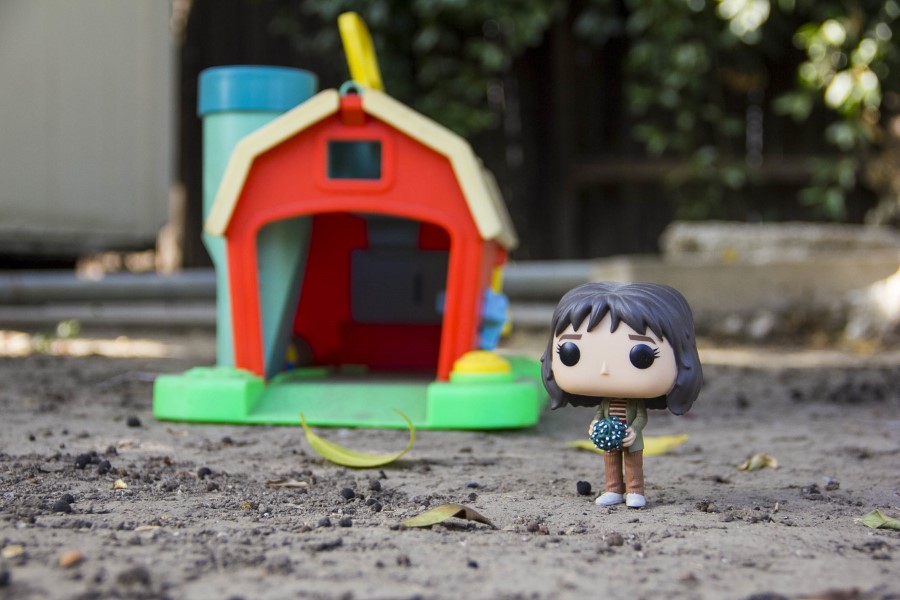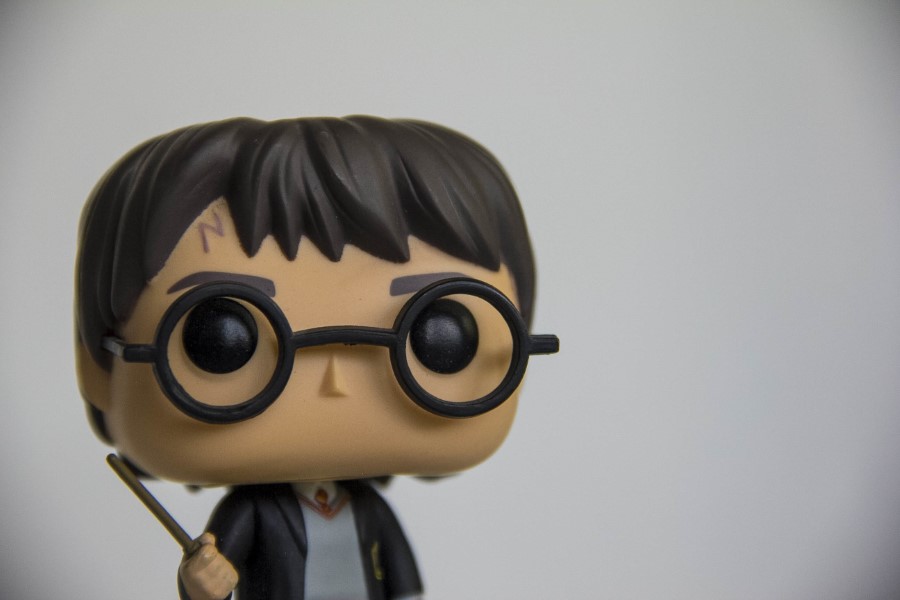Definition: Point of View (PoV) is the perspective from which a story is presented to the audience. It determines how the audience experiences and interprets the events and characters in the film.
In this article, you can:
- See the different points of view standard in storytelling, including examples from movies.
- See how different camera angles and shots can emphasize a particular PoV.
There are various types of points of view in movies, each offering a unique cinematic experience.
Table of Contents
First-Person Point of View (Subjective)

In first-person point-of-view films, the camera becomes the eyes of the main character, allowing the audience to see everything from their perspective.
This technique immerses the viewer into the character’s thoughts and emotions.
Examples
Here are two examples of films that tell the story from a first-person PoV:
- “The Blair Witch Project” (1999) – This found-footage horror film follows a group of student filmmakers who venture into the Black Hills near Burkittsville, Maryland, to investigate the legend of the Blair Witch. The movie is shot from the perspective of the characters’ handheld cameras, giving viewers a first-person experience of their terrifying journey.
- “Hardcore Henry” (2015) – This action-packed sci-fi film is shot from a first-person perspective. The story centers around Henry, a man who wakes up in a laboratory with no memory and a robotic limb. As he tries to rescue his wife from a telekinetic warlord, the audience sees everything through Henry’s eyes, immersing them in the intense, adrenaline-fueled action.
Check out the FilmDaft hardcore sci-fi quiz.
Third-Person Point of View (Objective)

The third-person point of view is the most common in films.
It involves an objective camera that observes the events from an outside perspective, providing a broader story view.
Examples
Here are two examples of films that tell the story from a third-person PoV:
- The Lord of the Rings trilogy: This epic fantasy series directed by Peter Jackson follows the journey of Frodo Baggins and his companions as they try to destroy the One Ring and save Middle-earth from Sauron. The story is narrated from a third-person perspective, allowing the audience to witness various characters’ events and struggles throughout the trilogy.
- Harry Potter series: Based on J.K. Rowling’s popular book series, the Harry Potter films depict the magical adventures of the young wizard and his friends at Hogwarts School of Witchcraft and Wizardry. The movies adopt a third-person narrative style, allowing the audience to witness the events from an external perspective, observing the characters’ growth, challenges, and triumphs as they navigate the wizarding world.
Subjective Point of View

Subjective point of view films aim to replicate the perspective and experiences of a specific character.
This technique often utilizes subjective camera movements and distorted visuals to convey the character’s emotions or mind.
Examples
Here are three examples of films that tell the story from a third-person PoV:
- “Birdman” (2014): Directed by Alejandro González Iñárritu, this film follows the story of a washed-up actor named Riggan Thomson, played by Michael Keaton. The entire movie is shot to appear as one continuous take, creating a subjective experience that immerses the audience in Riggan’s perspective as he navigates his personal and professional struggles.
- “Memento” (2000): Directed by Christopher Nolan, this film tells the story of Leonard Shelby, portrayed by Guy Pearce, who suffers from anterograde amnesia. The movie is presented in a non-linear narrative structure, which mirrors Leonard’s fragmented memory. As the audience, we experience the story through Leonard’s subjective viewpoint, piecing together clues and trying to solve the mystery alongside him.
- “Eternal Sunshine of the Spotless Mind” (2004): Directed by Michel Gondry, this film explores the complex relationship between Joel, played by Jim Carrey, and Clementine, played by Kate Winslet. The story is told through Joel’s memories as he undergoes a procedure to erase Clementine from his mind. The film utilizes dream-like sequences and shifting perspectives, providing a subjective portrayal of love, loss, and the human mind.
Omniscient Point of View (Objective)

Omniscient point-of-view films provide an all-knowing perspective, allowing the audience access to information the characters may not have.
This technique can create suspense and dramatic irony.
Examples
Here are three examples of films that tell the story from an omniscient PoV:
- “The Curious Case of Benjamin Button” (2008) – This film, directed by David Fincher, follows the life of Benjamin Button, who is born with the physical appearance of an old man and ages in reverse. The story is narrated from an omniscient perspective, providing insights into the thoughts and experiences of various characters throughout different stages of Benjamin’s life.
- “Forrest Gump” (1994) – Directed by Robert Zemeckis, this film tells the extraordinary life story of Forrest Gump, a simple-minded but kind-hearted man who unwittingly becomes part of significant historical events. The narrative is presented from an omniscient point of view, as the audience gains access to Forrest’s and other key characters’ inner thoughts and emotions.
- “Cloud Atlas” (2012) – Directed by Tom Tykwer and the Wachowskis, this film weaves together multiple interconnected storylines spanning different periods and genres. The movie employs an omniscient perspective to showcase the unfolding of these diverse narratives, offering a broader understanding of the characters and their journeys through time and space.
See examples of how filmmakers create the 3rd-person omniscient point of view in film.
Combining different Points of View.
Combining different types of points of view in storytelling can create a dynamic and multi-dimensional narrative.
It allows the audience to gain insights from various perspectives, enhancing the storytelling experience.
One movie that exemplifies this well is “Crash” (2004), directed by Paul Haggis.
In “Crash,” multiple characters’ lives intersect in Los Angeles, and the film weaves together their stories through a variety of points of view.
Here are some of the different PoVs that the movie combines:
- Third-person omniscient PoV: The film utilizes a third-person omniscient perspective to provide an overarching view of the interconnectedness of the characters’ lives. It allows the audience to see how their actions and choices impact one another.
- Multiple protagonists: “Crash” features several protagonists, each with a unique viewpoint. The film explores racial tension, prejudice, and redemption themes through their perspectives. By following several characters, the movie provides a comprehensive understanding of the events unfolding in the story.
- Subjective POV: The film also incorporates a subjective point of view to allow the audience to see into the character’s inner thoughts and emotions. This technique immerses the audience in the characters’ experiences and allows a deeper understanding of their motivations and struggles.
By combining these different points of view, “Crash” presents a mosaic-like narrative that showcases the complexity of human interactions and the consequences of our actions. It gives the audience a more comprehensive and empathetic view of the characters and their stories.
Overall, by combining third-person omniscient, multiple protagonists, and subjective point of view, “Crash” effectively tells a compelling and thought-provoking story that explores themes of race, identity, and humanity.
How different Points of View can be shown using specific Camera Angles and Shots in Film
Different camera angles and shots in film can effectively convey different points of view, enhancing the storytelling and providing the audience with varied perspectives.
You can read more on camera angles and shots here.
Here are a few examples:
High Angle Shot

This shot is taken from above the subject, looking down on them. It can be used to depict a character’s vulnerability, powerlessness, or inferiority.
It can also represent the viewpoint of an authoritative figure or an omniscient narrator.
Low Angle Shot

Conversely, a low-angle shot is taken from below the subject, looking up at them. It can create a sense of dominance, power, or intimidation.
This angle often portrays a character as heroic or larger than life.
Dutch Angle Shot

A canted angle or oblique angle shot involves tilting the camera to one side, resulting in a diagonal frame.
This technique can evoke a sense of unease, disorientation, or instability.
It is commonly used to represent a character’s psychological state or a chaotic situation.
See more about the Dutch angle shot.
Subjective/First-person Point of View (POV) Shot

This shot shows the audience what a character sees from their perspective by placing the camera where the character’s eyes would immerse the viewer in the character’s experience, creating empathy and understanding.
Over-the-Shoulder Shot

This shot is taken from behind one character’s shoulder, showing the back of their head and the other character they are interacting with.
It provides a sense of intimacy and involvement, allowing the audience to see the interaction from one character’s point of view.
Wide Shot

Also known as an establishing shot or long shot, this shot captures a large area or environment. It can establish a sense of location, scale, or context. Wide shots are often employed to show multiple characters or to provide an objective perspective.
Close-up Shot

A close-up shot focuses on a specific part of the subject, typically their face or a particular object.
It elicits a more intimate and emotional response from the audience, allowing them to see the character’s expression or the object’s significance in detail.
The director’s choice of camera techniques can influence the audience’s understanding of the characters, their relationships, and the story being told.
Conclusion
Different point-of-view techniques in film serve unique purposes and can greatly impact the audience’s experience.
Whether immersing the viewer in the protagonist’s shoes, offering a broader perspective, delving into a character’s subjective experience, or providing an all-knowing vantage point, each approach adds depth and enhances storytelling.
You can utilize these techniques to engage audiences emotionally, create tension, convey specific narratives, or explore psychological depths.
By employing different points of view, you can shape the audience’s understanding and connection to the story being told.
Up Next: Most Common Lenses And Focal Lengths Used in Movies

